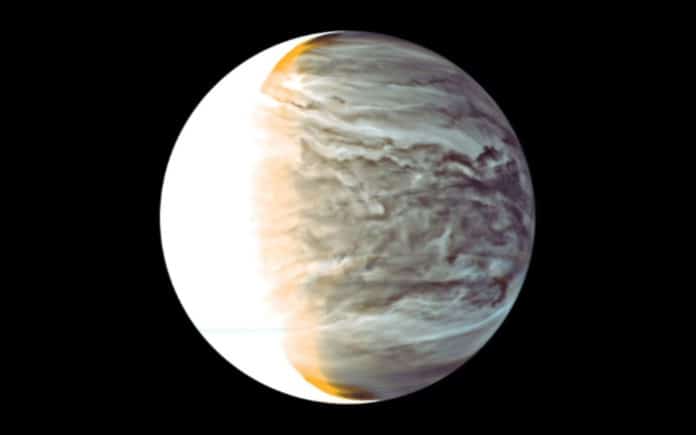The discovery of Phosphine in the clouds of Venus that could be a sign of life on Venus has reignited scientific interest in the planet. Now, a new study found evidence that Venus’ clouds could support Earth-like photosynthesis.
The analysis found that sunlight filtering through Venus’ clouds could support Earth-like photosynthesis in the cloud layers. Like on Earth, hypothetical phototrophs in Venus’ clouds would have access to solar energy during the day.
Surprisingly, the team found that the photosynthesis on Venus occurs at night as well. This happens due to thermal or infrared energy originating from the surface and the atmosphere. Both the solar and thermal radiation in Venus’ clouds possess wavelengths of light absorbed by the photosynthetic pigments.
What’s more, light energy would be available from below and above the clouds, giving photosynthetic microorganisms opportunities to diversify across the cloud layers.
Using a radiative transfer model, scientists have shown that the middle and lower cloud layers above Venus receive significantly less UV, 80-90% less flux in the UV-A when compared to Earth’s surface. Both layers significantly exhaust radiation in the UV-B and UV-C, representing the most harmful components of the UV.
Scientists measured the nighttime photosynthetic potential through Venus’ thermal energy by comparing the photon fluxes rising from Venus’ hot atmosphere and surface to the photon fluxes measured within low-light phototrophic habitats on Earth. The comparisons revealed that photon fluxes from Venus’ atmosphere and surface exceed the fluxes measured in these low-light phototrophic environments on Earth.
Scientists noted, “The chemical conditions of Venus’ clouds could be partly composed of neutralized forms of sulfuric acid, such as ammonium bisulfate. These chemical conditions would exhibit dramatically higher water activities when compared to Hallsworth’s calculations and much lower acidities when compared to current models for Venus.”
Biochemistry Professor Rakesh Mogul, the lead author of the study, said, “Our study provides tangible support for the potential for phototrophy and/or chemotrophic by microorganisms in Venus’ clouds. The acidity and water activity levels potentially fall within an acceptable range for microbial growth on Earth, while the constant illumination with limited UV suggests that Venus’ clouds could be hospitable for life. We believe that Venus’ clouds would make a great target for habitability or life detection missions, like those currently planned for Mars and Europa.”
Journal Reference:
- Rakesh Mogul, Sanjay S. Limaye et al. Potential for Phototrophy in Venus’ Clouds. DOI: 10.1089/ast.2021.0032
